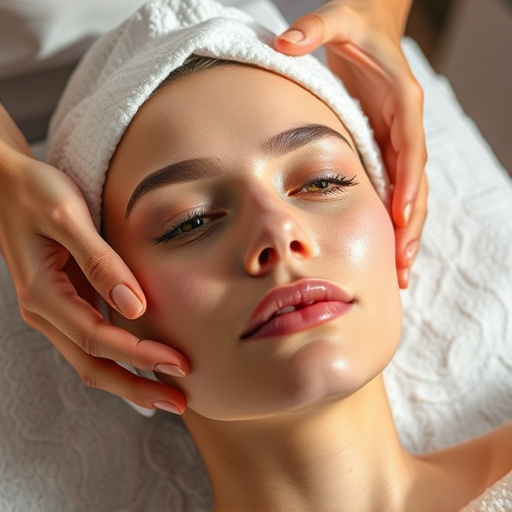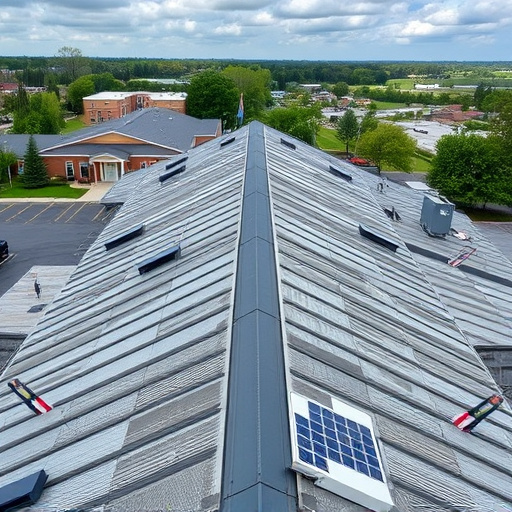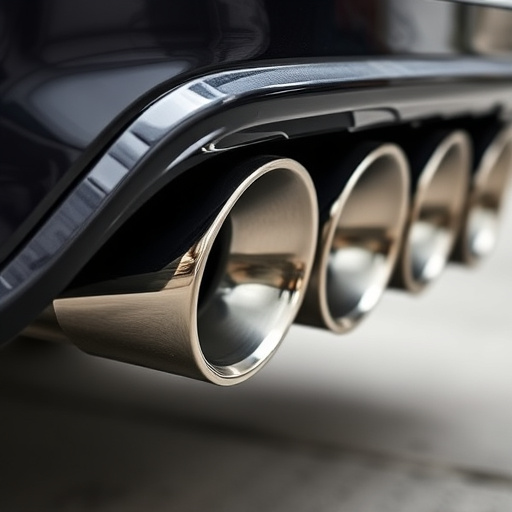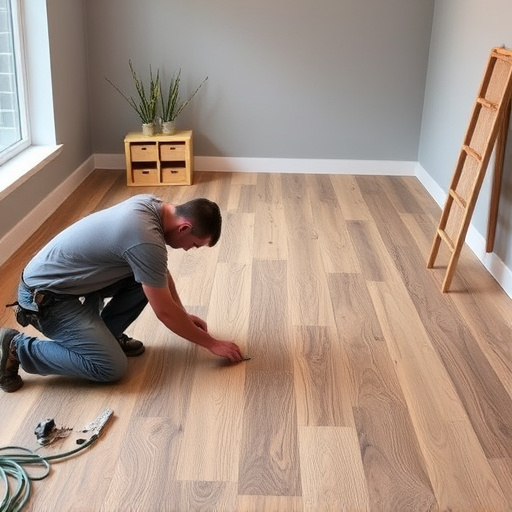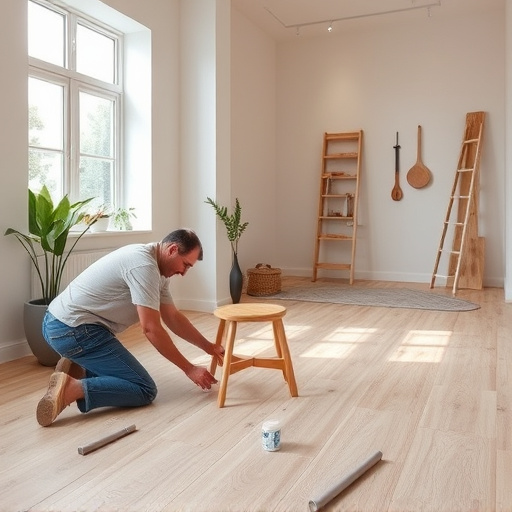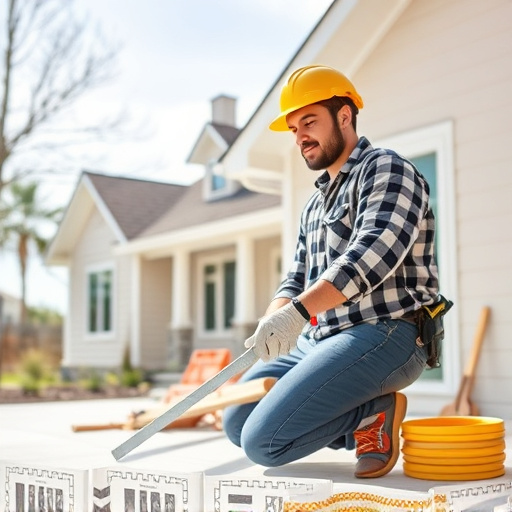After a successful flooring replacement, protecting your new floors is key. Regular cleaning with floor-specific, gentle cleaners prevents damage from harsh chemicals. For hardwood, a damp mop and mild detergent are sufficient, while high traffic areas require more frequent vacuuming. Applying floor protectors under furniture legs guards against indentations. Establish a consistent cleaning routine: daily sweeping/vacuuming and weekly deep cleaning in high-traffic zones. Use warm water and mild detergent suitable for your floor type to avoid damage. Promptly wipe up excess moisture, testing new products first in inconspicuous areas.
After a successful flooring replacement, maintaining your new floors is crucial for preserving their beauty and longevity. This comprehensive guide will walk you through the essential practices to ensure your new floors stay in pristine condition. From daily cleaning routines and suitable products to preventing scratches and stains, we’ll cover it all. Learn how regular care, including addressing common issues and rotating furniture, can keep your floors looking their best. Additionally, discover when to seek professional help for optimal flooring maintenance after replacement.
- Cleaning and Protecting Your New Floors
- – Best practices for regular cleaning routines
- – Suitable cleaning products and techniques
Cleaning and Protecting Your New Floors
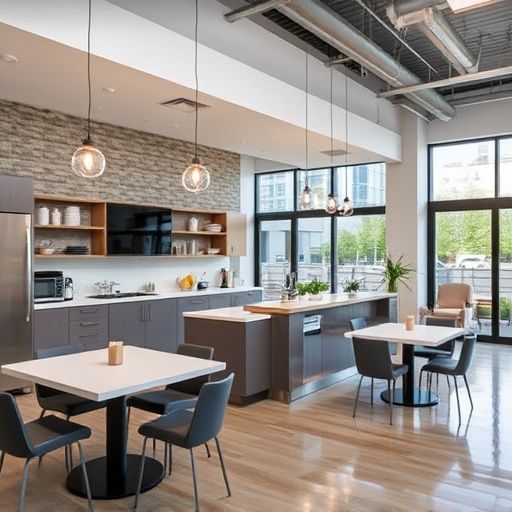
After successfully completing a flooring replacement project, be it for a kitchen remodel or as part of your home renovations, protecting and maintaining your new floors is paramount to ensure their longevity. Regular cleaning plays a crucial role in this process. Use gentle cleaners suitable for the specific floor type, avoiding harsh chemicals that could damage the surface. For hardwood floors, a damp mop and a mild detergent are usually enough to keep them sparkling. In homes with high foot traffic or pets, consider vacuuming more frequently to remove dirt and debris that can scratch or dull the finish.
In addition to cleaning, applying floor protectors under furniture legs is essential. This simple step prevents indentations and scratches, especially in areas prone to heavy use. For a home with recent additions or renovations, this becomes even more critical as you want your new floors to look their best for years to come. Remember, regular upkeep and care will ensure your flooring replacement project stands the test of time, enhancing the aesthetics of your space without breaking the bank on future repairs.
– Best practices for regular cleaning routines
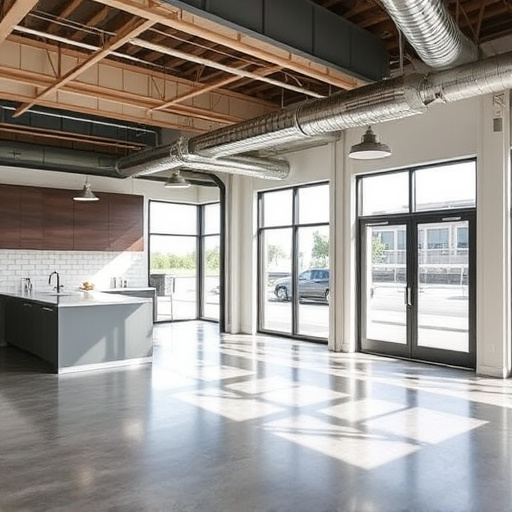
Regular cleaning is essential to maintaining the appearance and longevity of newly installed floors. For optimal results after a flooring replacement, especially in high-traffic areas like kitchens or during residential renovations or home additions, establish a consistent cleaning routine. Begin by vacuuming or sweeping daily to remove dirt and debris, ensuring no particles are left behind that could scratch or damage the surface.
Use a microfiber mop with warm water and a mild detergent suitable for your floor type. Avoid harsh chemicals that may strip away protective coatings, especially in residential settings where families and pets frequent. For kitchen renovations or areas prone to spills, consider deeper cleaning sessions weekly to tackle stubborn stains promptly. Regular care will preserve the floors’ beauty and extend their lifespan, ensuring they remain a stunning feature in your home for years to come.
– Suitable cleaning products and techniques
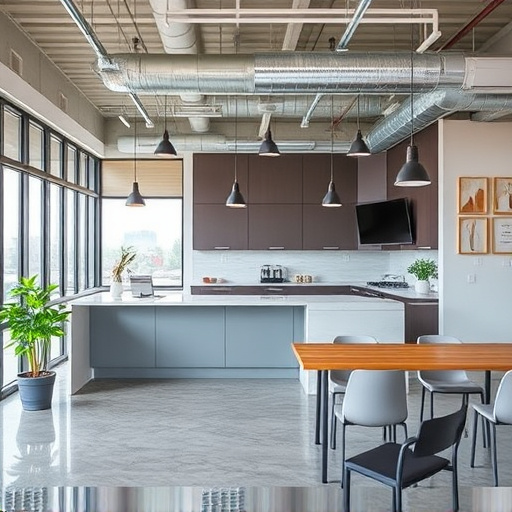
After completing a flooring replacement project, whether it’s part of a whole house remodel or targeted kitchen renovations, it’s crucial to maintain the new floors using suitable cleaning products and techniques. To preserve the look and longevity of your new flooring, avoid using harsh chemicals that can damage the surface. Opt for floor cleaners specifically designed for your flooring type – from hardwood to tile to laminate – as these products are formulated to effectively remove dirt without leaving behind residue or damaging the finish.
For most floors, a simple solution of warm water and a mild detergent is sufficient for regular cleaning. For more stubborn stains, use a soft-bristled brush or cloth and a floor cleaner suitable for your flooring material. Always test any cleaning product in an inconspicuous area first to ensure it doesn’t discolor or damage the surface. Additionally, be mindful of how you dry floors after cleaning; excessive moisture can damage certain types of flooring, so always wipe up excess water promptly and consider using a microfiber cloth or mop designed for efficient drying.
After completing your flooring replacement, proper maintenance is key to preserving the look and longevity of your new floors. By implementing a consistent cleaning routine using recommended products and techniques, you can ensure your investment remains protected and enhances the overall aesthetics of your space for years to come. Remember, regular care will not only maintain the beauty of your new floors but also make them more resistant to stains and damage, making your flooring replacement a lasting success.

